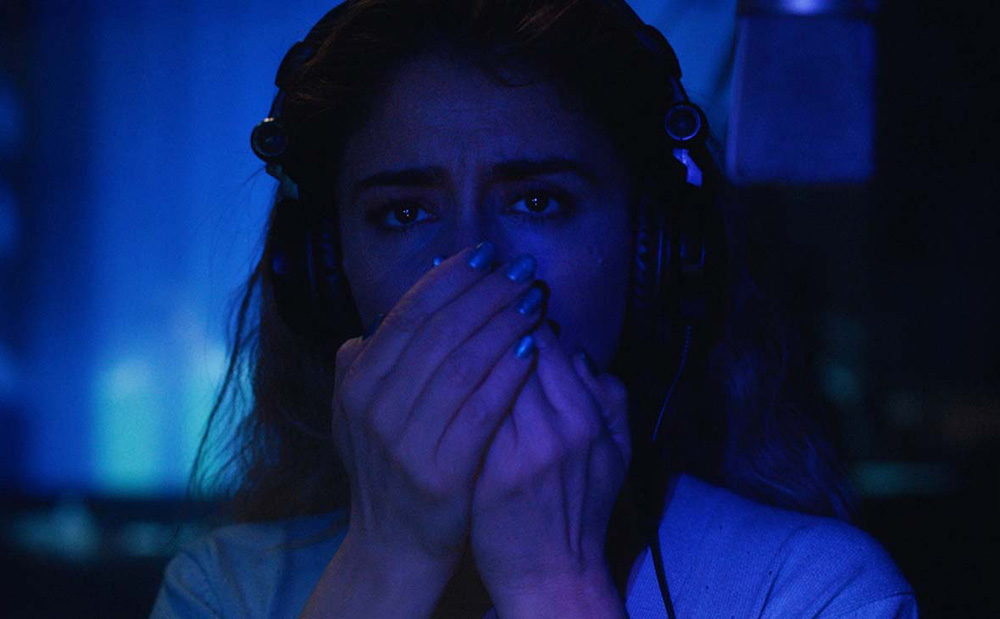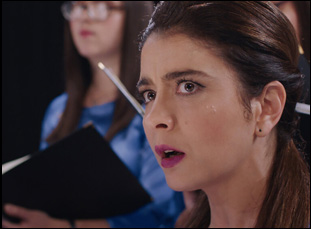It was during what someone on her post-production team called “the longest dubbing session in Argentina film history” on her 2014 feature debut “Death in Buenos Aires” that Natalia Meta began having thoughts about her follow-up. She had the good fortune of landing the great Demián Bichir to play her lead in the wily crime drama, but the actor’s busy schedule prevented him from spending enough time before the shoot to properly practice an Argentinian accent and the two agreed that they could easily redub the dialogue in post-production, though again, as work on “The Hateful Eight” and his series “The Bridge” interfered, any additional time he could give to the project was in drips and drabs from across the Atlantic. The drawn-out process gave Meta time to fiddle around with sound in ways she never had before and also to read “El mal menor,” a novella by C.E. Feiling that had been recommended to her.
Throw in a vacation that had gone awry and Meta had the makings of an intriguing thriller, taking the restauranteur in Feiling’s book and turning her into a voiceover artist named Inés (Erica Rivas) who begins to wonder whether she’s entered another reality after a trip with a boyfriend (Daniel Hendler) she’s already unsure of committing to goes far worse than she could’ve expected. In “The Intruder (El Profugo),” Inés’ day job requires her inhabit other characters, typically as scream queens in horror films, but after a weekend of bad karaoke, uncomfortable spelunking and ultimately a tragic turn of events, she returns to the city feeling disconnected from herself, a sensation heightened by Meta’s masterful use of sound design and layering of images where Inés may lend her voice to the movies, but can find herself feeling as if she’s trapped inside them without knowing the way out.
The bewitching character study made all the more gripping by Rivas’ committed, quizzical turn as Inés has been charming and unsettling audiences by equal turn since its premiere at the Berlinale 2020, shortly before the pandemic rerouted it to a largely virtual release, but it has received a second wind as Argentina’s official selection to compete for Best International Feature at the Oscars this year and American audiences can readily catch it on HBO Max. Recently, Meta spoke about the film that required reconnaissance at both the great concert halls in Argentina and its deepest caves, as well as the auditory trickery involved and working with Rivas on a complex and unforgettable character.
I have an editing house and my dear friend and co-editor was best friends with C.E. Feiling, the author of the book. We have the offices quite near and he came in to see how the editing was going of my previous film and we started talking and he talked about the beginning of the novel and that really intrigued me. I read the novel and that’s it [though] at the beginning, I found it too gory or too terrifying for me to film. I was too scared. But gradually, I thought about the story from different angles and I introduced a lot of my experience in the dubbing studio, which was also very long and a bit stressful. I learned a lot of the tricks there about manipulating voices, which fascinated me and I mixed all that up together with visits to the choir here in Argentina. The central idea is about this possibility of dreams coming into the real world and staying here, [which I see as an] actual issue regarding the idea that we are able to not only make our dreams come true, but also [create the possibility] to reinvent ourselves.
The idea came through the sound, but when you’ve got those scenes in the studio where you’ve got those different layers of reality as she’s dubbing a movie and you see her removed from what she’s giving life to with her voice on screen, was it exciting to design that?
I spent a long time inside the dubbing studio, doing trials and testing to see the different ways in which we could film and also in which we could record because the sound comes and goes in different ways. Some people are listening to the whole thing and some people are only listening to the microphone, so all this was quite elaborate. I was also quite interested in the idea of dubbing horror movies because there’s a lot of commentary to be made regarding how feminine desire is [depicted] in horror films, so this was important for me to reflect on. There’s many horror films where this is punished, and it’s not the fault of these films, but it’s an idea that’s very strong, and possession is regarded as something also that has to be punished, which isn’t necessarily bad. So I wanted to show the positive possibilities in this and of being able to choose between certain fantasies – that sometimes you want to go with them and you have to have the responsibility to go forward with them or not. Genre takes you to certain places and I wanted to twist that a little bit and on my way, I tried to lose my fear and to be free.
What was it like working with Erica Rivas on creating this character?
I’ve always admired her a lot as an actress. She’s amazingly talented, but what I loved is she can have many different approaches. For example in “Wild Tales,” she’s deliriously funny and then in “La Cordillera,” which is a thriller, she is really intriguing and she doesn’t let go of this [mystique], which is very difficult because at a certain point, you get to know the character, but she’s able to stay with it, so I thought this was absolutely marvelous. We worked a lot in dubbing, and with her body and with choreographers, and investigating about sound, about genre and also about gender — [there are] a lot of aspects which the film enters the conversation. This film is a conversation…there’s a lot of voices, so it’s actually quite a conversation. [laughs]

There were a lot of things I already knew I could do, so I was counting on them and then there was a lot of things that we did afterwards in dubbing. We had a lot of actors doing the voices of the other actors and then we kind of made layers of voices, not only in the end, but throughout the film. It’s very subtle, but for example the doctor who she goes to visit – I won’t tell which, but that’s the voice of one of the [other] actors. We were playing a lot with this and we also were trying for her voice to have a story too. At the beginning, it’s softer and more acute and then it goes changing subtly, in dialogue also. Then we used a lot the sounds of the organ, which for us was like a protagonist too, and in other scenes, the airplane has a tuba and sounds from the organ — it’s all mixed up. This was a lot of fun, at least for me.
It’s fun in the movie too. I understand the choir Inés performs with came through your sister-in-law. What was it like to find that concert hall, particularly with the organ so prominently placed?
Actually organs are upstairs, but it’s difficult to combine with a choir, so they bring the organ player down and this [location] is called Sala Sinfónica de CCK, an orchestra house in Argentina, in Buenos Aires, which has one of the greatest organs in Latin America. I was amazed. I went there to visit it, thanks to a friend and producer Verónica Cura and I just thought it was a big piano or something of the sort, but it’s a big house where you can go in. It has several staircases and it’s full of tubes and a whole air system, so it was fascinating and the choir is where my sister sings, so I tried to find some pieces [specifically] for an organ and choir. In a way, it’s a bit like “Phantom of the Opera.”
Another amazing location in the film is a cave that you film in for her vacation. What was it like getting cameras in there?
It was incredible. I went to the cave also on a vacation with some friends and I had the same experience. I won’t spoil it, but even the tourist guide was the same person. And my friends and I had the same reaction as Erica in the film. These are places — and it’s the same with the organ — you really don’t expect that you’re going to find. I thought we were going to visit a cave in a mountain, and then suddenly I see this subterraneous river. It was really thrilling. And it’s a tourist place, but not so well known, so there were few people and it was really strange and really difficult to shoot there. We were all in little boats and well, I had a mess-up. I spilled some water on the sound system [at one point] and that made it terrible. Everyone wanted to kill me on set. [laughs] But it wasn’t dangerous or anything. It was funny.





